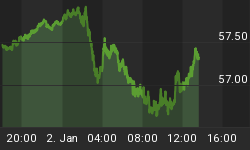As the price of gold has taken some lumps since it crashed into the symbolically significant $1,000 per ounce mark back in March, those on Wall Street who had consistently underplayed its potential on its way up are now assuring its continued retreat. According to these gold market spectators, prices have risen solely as a result of financial panic, and now that the fear has apparently subsided, gold's gains will evaporate as well.
I have been buying gold and gold stocks for myself and my clients since 1999 and not once did I buy out of fear. In fact, from my perspective the only fear I've observed in the gold market is from those who have been too afraid to buy.
While fear may from time to time play a role in creating price spikes in gold, the underlying bull market has been driven by solid fundamentals. Those who have been too afraid to buy simply do not understand the underlying dynamics and have instead decided that the market is irrational. As a result, gold continues to climb the classic wall of worry as any dip in its otherwise upward trajectory causes the speculative investors to jump ship.
Gold's ascent from less than $300 an ounce to its current level was, and is, being driven by those who prefer it as a store of value to the paper alternatives offered by governments. As the Federal Reserve's dollar debasement policy kicks into high gear and other central banks around the world are forced to follow suit to maintain their pegs against the dollar, the rational choice for long term investors is gold. Thus, the decision to buy is not rooted in fear but reason. On the other hand, the decision not to buy is not only rooted in fear, but ignorance as well.
Those oblivious to gold's warnings instead place their trust in government-supplied statistics. Based simply on flimsy CPI reports, these observers believe that inflation is nowhere in evidence, and that the flight to gold is therefore unwarranted. Yesterday's GDP report provides the latest illustration of this dynamic. The government was able to present an annualized first quarter growth rate of .9% based on an assumed annualized rate of inflation of only 2.6%. In other words, inflation in the first quarter of 2008 was the lowest first quarter inflation in the last four years. How such a claim did not elicit howls of laughter is beyond me. The government previously reported that in the years 2007, 2006, and 2005, annualized first quarter inflation rates were 4.2%, 3.4% and 3.9% respectively. Does anyone, besides Fed governors and Wall Street economists, really believe inflation so far in 2008 is 33% below the average rate over the past three years?
Many of those who place their faith with government figures and dismiss the movements in gold believe that inflation is not a problem so long as wages are not rising rapidly. The fact that wages are lagging other prices merely means that inflation is that much more problematic for average Americans. Ironically, what is overlooked is that wages are in fact rising, just not in America. They are rising in the nations that produce the goods that we consume, and those higher costs are indeed being passed on to Americans.
However, recent action in the bond market suggests that a few more people are getting wise to the government's con. This week, yields on long-term treasuries hit new highs for the year, with the yield on the ten year up 90 basis points from its March low. While the Pollyannas on Wall Street attribute this move to the strengthening U.S. economy, those of us buying gold know it's more likely a long overdue increase in inflation expectations. Got gold?
For a more in depth analysis of our financial problems and the inherent dangers they pose for the U.S. economy and U.S. dollar denominated investments, read Peter Schiff's book "Crash Proof: How to Profit from the Coming Economic Collapse." Click here to order a copy today.
More importantly, don't wait for reality to set in. Protect your wealth and preserve your purchasing power before it's too late. Discover the best way to buy gold at www.goldyoucanfold.com, download our free research report on the powerful case for investing in foreign equities available at www.researchreportone.com, and subscribe to our free, on-line investment newsletter at http://www.europac.net/newsletter/newsletter.asp.
















